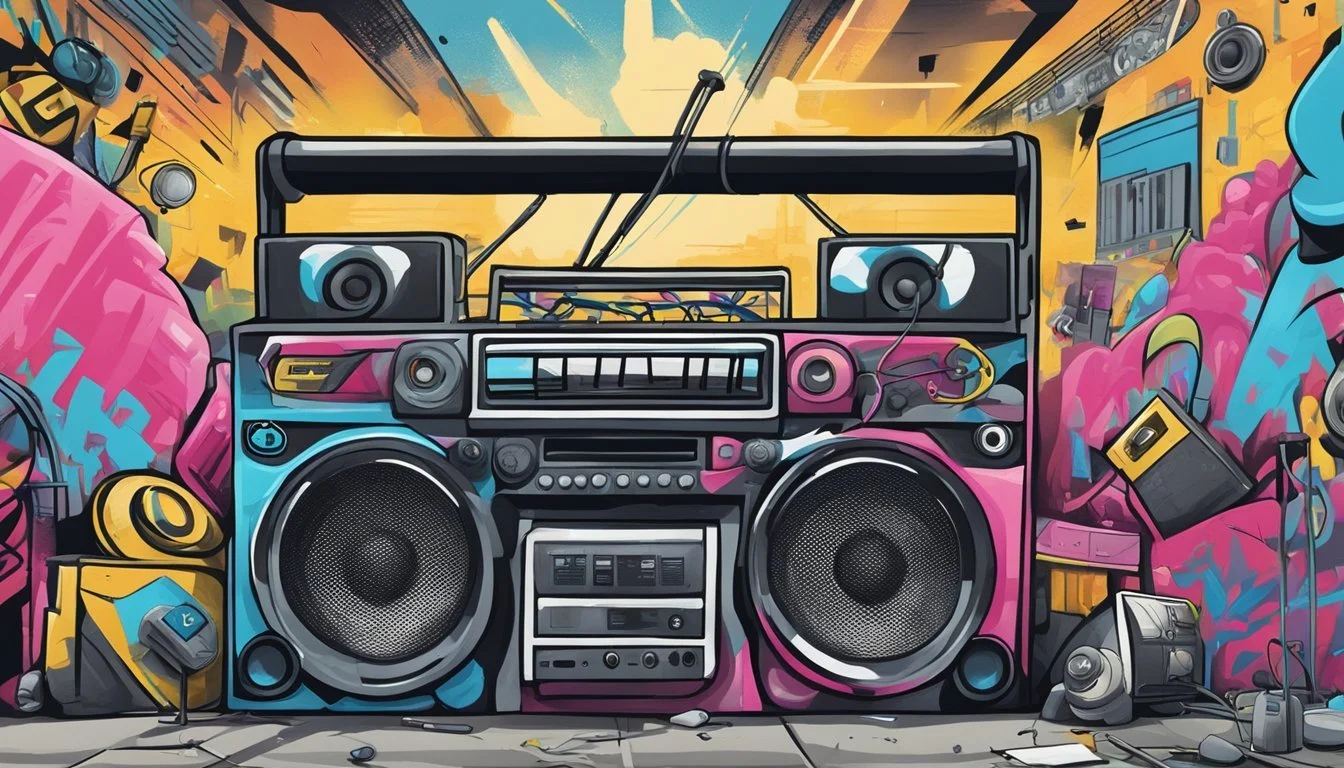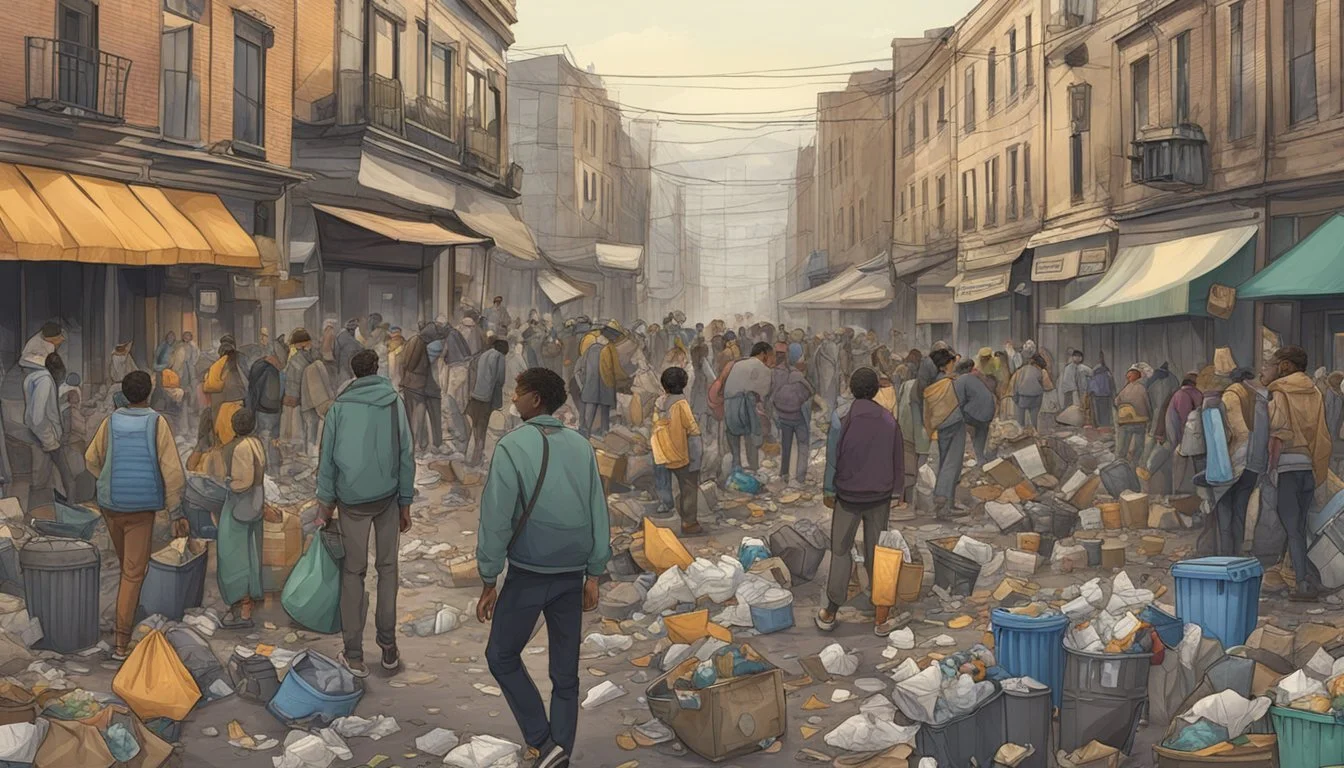Embrace the Hard Knocks of Life: Uncover the Lessons That Shape Us!
Life often presents challenges and obstacles that shape our character and understanding of the world. The phrase "hard knocks of life" encapsulates these difficult experiences that serve as invaluable teachers. These unplanned, sometimes painful lessons form an informal education that complements or even surpasses traditional schooling in preparing individuals for life's realities.
The concept of learning through hard knocks is not new. It has been referenced in literature and popular culture for generations, highlighting its universal relevance. This informal education comes from various sources - personal failures, unexpected setbacks, and the general rough-and-tumble of daily existence.
While formal education provides structured learning, the school of hard knocks offers practical wisdom. It teaches resilience, adaptability, and problem-solving skills that are essential for navigating the complexities of adult life. These lessons, though often unwelcome at the time, ultimately contribute to personal growth and success.
Historical Context of the Phrase 'Hard-Knock Life'
The phrase "hard-knock life" gained widespread popularity through the 1977 Broadway musical "Annie." Set during the Great Depression, the musical tells the story of an orphan girl named Annie.
In the show, Annie and her fellow orphans sing the iconic song "It's the Hard-Knock Life." This musical number describes the difficult conditions they face under the care of Miss Hannigan, the orphanage's cruel matron.
Charles Strouse composed the music for "Annie," while Martin Charnin wrote the lyrics. Their collaboration brought the phrase "hard-knock life" into the cultural lexicon.
The expression draws from earlier idioms like "school of hard knocks," which dates back to the late 19th century. These phrases refer to learning life lessons through difficult experiences rather than formal education.
"Hard-knock life" captures the struggles of Depression-era orphans, but its meaning has expanded over time. Today, it's often used to describe any challenging life circumstances or periods of adversity.
The musical's success and subsequent film adaptations helped cement "hard-knock life" as a recognizable phrase in popular culture. It continues to resonate with audiences, reflecting universal experiences of hardship and resilience.
Cultural Impact Through Music and Media
The hard knock life theme has resonated across Broadway, film, and popular music, shaping cultural narratives about struggle and perseverance. Its influence spans generations and genres, touching audiences through various artistic mediums.
The Resonance of 'It's the Hard Knock Life' in Broadway and Film
"It's the Hard Knock Life" debuted in the 1977 Broadway musical "Annie," instantly becoming an iconic song about orphans' struggles. The catchy lyrics and upbeat tempo contrasted with the harsh realities described, striking a chord with audiences.
The song's impact extended beyond the stage. In the 2014 film adaptation of "Annie," the classic tune was reimagined for a new generation. This version maintained the spirit of the original while updating it for contemporary viewers.
Broadway revivals have kept the song alive, introducing it to new theatergoers. Its enduring popularity demonstrates how effectively it captures the universal experience of facing life's challenges.
Reimagining the Struggle: Jay-Z's 'Hard Knock Life (Ghetto Anthem)'
Jay-Z's 1998 hit "Hard Knock Life (Ghetto Anthem)" sampled the Broadway song, transforming it into a hip-hop classic. The rapper drew parallels between orphan struggles and inner-city hardships, giving the lyrics new context.
Jay-Z's version resonated with urban youth, addressing themes of poverty, crime, and dreams of success. It became an anthem for those facing adversity in tough neighborhoods.
The song's success brought the "hard knock life" concept to a wider audience. It showcased hip-hop's power to reinterpret cultural touchstones and speak to contemporary issues.
Other Notable Mentions in Popular Culture
The "hard knock life" theme has appeared in various forms across pop culture. In the comedy film "Austin Powers in Goldmember," the phrase was used for comedic effect, showing its versatility.
Television shows have referenced the concept, often using it to depict characters overcoming obstacles. The phrase has become shorthand for describing difficult circumstances or upbringings.
Music artists beyond Jay-Z have alluded to the "hard knock life" in their lyrics. These references demonstrate the theme's ongoing relevance in discussing societal challenges and personal struggles.
Psychological Interpretation of Hardship
Hardship shapes psychological responses and coping strategies. Individuals facing adversity develop unique mental frameworks to navigate challenges and find meaning in difficult circumstances.
Coping Mechanisms and Resilience
Resilience emerges as a key factor in overcoming hardship. People experiencing poverty, hunger, or loss often develop adaptive coping mechanisms. These may include:
• Emotional regulation • Problem-solving skills • Seeking social support
Foster children and orphans frequently exhibit remarkable resilience. They learn to adapt quickly to new environments and form bonds despite unstable circumstances.
Dreams and hopes for a better tomorrow serve as powerful motivators. Many use visualization techniques to imagine a brighter future, which can provide comfort during trying times.
Perception of Poverty and Hope
Poverty significantly impacts psychological well-being. Empty bellies and material deprivation can lead to:
Chronic stress
Feelings of helplessness
Lowered self-esteem
However, hope often persists even in dire situations. Some individuals reframe their circumstances positively, focusing on non-material sources of fulfillment.
Safety pins symbolize makeshift solutions, representing resourcefulness in the face of scarcity. This ability to find creative solutions fosters a sense of agency and control.
Work, despite its challenges, can provide structure and purpose. It offers opportunities for skill development and social connection, potentially alleviating some hardship-related distress.
The Socioeconomic Stratifications Depicted
Social class divisions shape life experiences and opportunities. Economic factors create stark contrasts between privileged and disadvantaged groups, influencing access to resources and life trajectories.
The Journey from Orphanage to Adulthood
Orphanages often house children from low-income backgrounds. These institutions struggle with limited funding and overcrowding. Many orphans face challenges in education and socialization.
Foster care aims to provide more individualized support. However, frequent moves between homes can be disruptive. Foster kids may lack stable adult relationships and mentorship.
As they age out of the system, these young adults encounter new hurdles. Limited financial resources and support networks make the transition difficult. Many struggle to secure housing, pursue higher education, or find stable employment.
Life Behind and Beyond the Chrysler Building
The iconic Chrysler Building symbolizes wealth and ambition. Its Art Deco design showcases the glamour of 1920s New York. Inside, corporate offices house well-paid professionals.
Just blocks away, a different reality unfolds. Low-income neighborhoods reveal stark economic divides. Residents face challenges like inadequate housing and limited job prospects.
Some from disadvantaged backgrounds find ways to climb the socioeconomic ladder. Education and networking can open doors. However, systemic barriers often hinder upward mobility.
The contrast between luxury high-rises and nearby ghettos highlights persistent inequality. Bridging this gap remains an ongoing societal challenge.
Language and Imagery in 'Hard-Knock Life'
The lyrics of 'Hard-Knock Life' paint a vivid picture of struggle and resilience through carefully chosen words and evocative imagery. This iconic song blends elements from the musical Annie with hip-hop sensibilities to create a powerful narrative.
Dissecting the Lyrics and Their Significance
The opening lines set the tone: "It's the hard-knock life for us." This simple phrase encapsulates the entire theme of the song. The repetition of "hard knock" emphasizes the constant challenges faced by the characters.
References to "cotton blankets" and having to "scrub" highlight the harsh living conditions. These details create a stark contrast to the idealized childhood many expect.
The lyrics also mention Miss Hannigan, the antagonist from Annie, representing oppressive authority figures. This adds depth to the narrative, giving a face to the hardships described.
Symbolism and Metaphor Usage
The song employs powerful symbolism throughout. The absence of Santa Claus serves as a metaphor for lost innocence and unfulfilled hopes. It symbolizes the harsh realities that have replaced childhood fantasies.
"Empty belly life" is a striking phrase that vividly conveys hunger and deprivation. This imagery goes beyond literal meaning, representing a lack of nurturing and care.
The repeated chorus acts as a rallying cry, transforming individual struggles into a shared experience. It symbolizes unity in adversity, a common theme in both Annie and hip-hop culture.
Modern-Day Realities and Reflections
The concept of a "hard knock life" has evolved significantly since its original depiction. Foster care systems have transformed, while societal attitudes toward orphans and underprivileged children have shifted.
Comparisons to the Original Depictions
Modern orphanages differ greatly from those portrayed in earlier media. Gone are the days of crowded dormitories and strict matrons. Today's foster homes aim to provide more personalized care and support.
Children in the system now have access to education, healthcare, and social services. However, challenges persist. Many still face emotional trauma and instability.
The "empty bellies" and harsh labor conditions of the past have largely been replaced by different struggles. These include navigating complex bureaucracies and dealing with frequent moves between homes.
Evolution of the Orphan Experience
The 21st century has brought new realities for foster kids. Technology plays a significant role, connecting them to resources and support networks previously unavailable.
Dreams of a better tomorrow remain, but take different forms. Instead of fantasizing about Santa Claus or wealthy adopters, many focus on education and career aspirations.
The "ghetto" stereotype has faded, with foster children coming from diverse backgrounds. Work expectations have shifted from manual labor to preparing for the modern job market.
Foster care systems now emphasize reunification with biological families when possible. This approach recognizes the importance of maintaining family connections while ensuring child safety.







